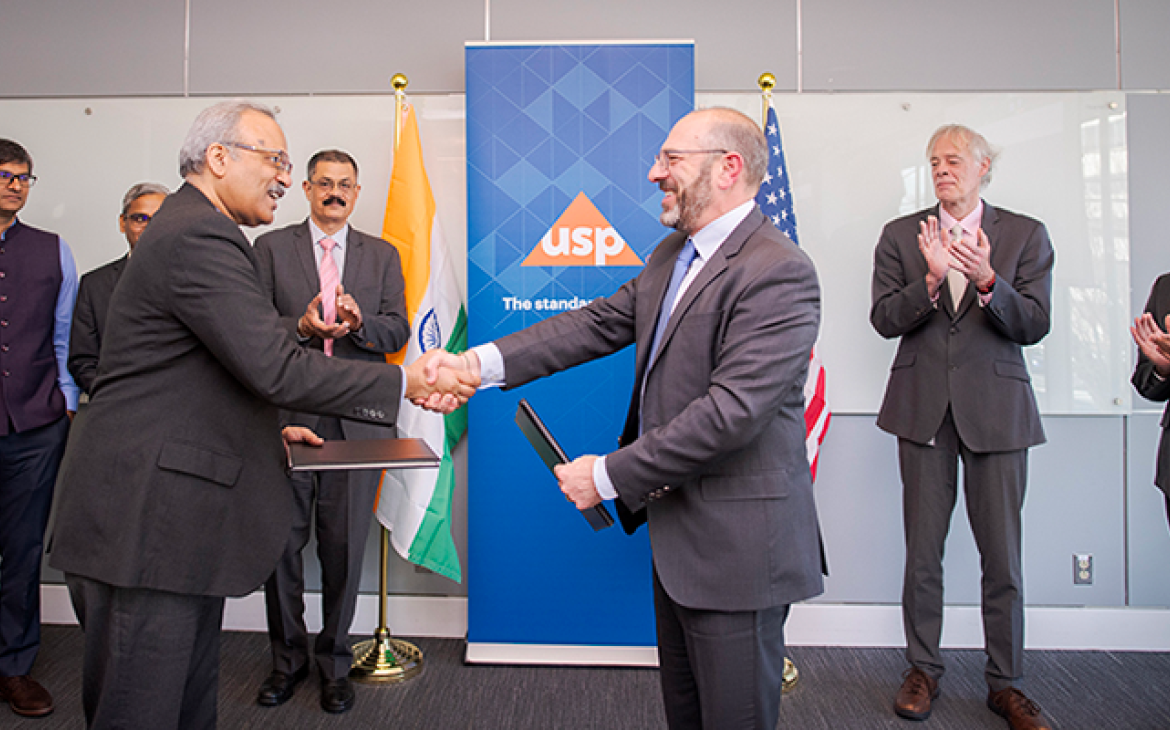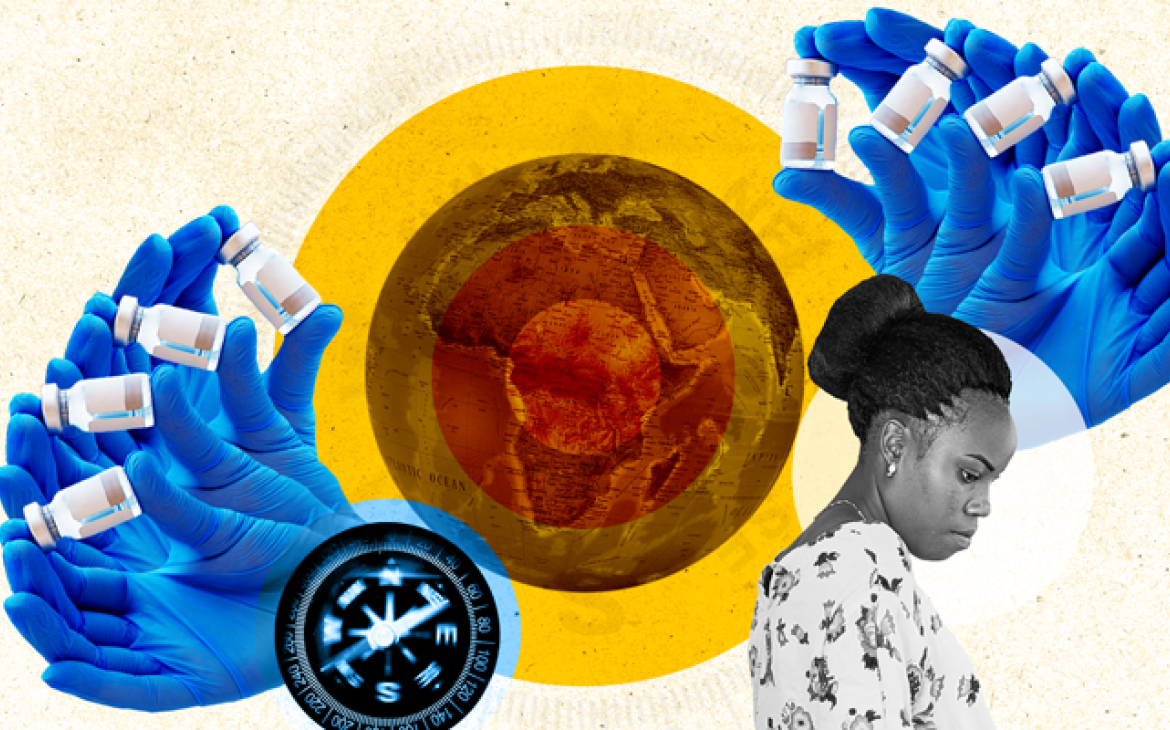
Q&A with Georgetown University researchers Matthew Hassett, Ph.D. and Professor Paul Roepe, Ph.D. on their recently published review article, Origin and Spread of Evolving Artemisinin-Resistant Plasmodium falciparum Malarial Parasites in Southeast Asia.
USP: What were the objectives for the review?
Dr. Hassett: Our project centers on understanding the impact of quality medicines on the spread of antimicrobial resistance (AMR), particularly resistance for Plasmodium falciparum malarial parasites. For the review, we looked at the epidemiological history of the current iteration of P. falciparum drug resistance in Southeast Asia. Currently, the therapies recommended by the World Health Organization for treating malaria infections are arteminisinin-based combination therapies (ACTs), which are combinations of a short acting drug arteminisinin that reduces parasite burden in the body quickly and a longer lasting partner drug. Our goal was to understand when arteminisinin resistance emerged in Southeast Asia and how this has spread in the last decade. The literature tells us that arteminisinin resistance wasn’t identified till the mid-2000s with initial publications coming out only in 2007 - 2008. We can look back at archived samples and examine specific molecular markers or other identifying factors that help us understand what arteminisinin resistance is and we can track the spread of this phenomenon through Southeast Asia to give us a better idea of how resistance is emerging and spreading, and what kind of environments resistant parasites favor. A major worry for the malaria community is the possibility of spread of resistance to the African continent. We are interested in learning how fast it is spreading and trying to get a grasp on what sort of measures to put in place and how these data can fit into other research that we are doing in the lab.
USP: Why did you choose the Southeast Asia region?
Dr. Hassett: The Southeast Asia region is the epicenter for all anti-malarial drug resistance and currently that’s the area of the world where most resistance to these specific arteminisinin-based drugs, the last class of drugs that effectively treat all species of malaria worldwide, is found. It’s the only area of the world where we have seen significant artemisinin – based drug failures and the only countries in the world where the WHO has identified that certain ACTs are failing.
USP: What timeframe did you use for your review?
Dr. Hassett: This is the first drug resistance phenomena that has been identified in real-time in it’s very earliest days, perhaps in time to reverse the spread. Our timeline for the research spans the timeframe that this drug resistance phenomenon has been seen - literally from the beginning of the resistance to the present day.
Dr. Roepe: The timeline also coincides with the use of these drugs in this region. Artemisinin was used as a single drug agent in the 1990s and then used as one of two drugs in ACT combinations as mandated by WHO in 2001, and resistance started approximately in 2007.
USP: What types of challenges did you face in doing this review?
Dr. Hassett: Resistance wasn’t identified till the mid-2000s, so the major challenge was the nature of the data that was available. We looked at data for archived blood samples and were limited to looking at specific genetic markers that correlate with resistance.
Dr. Roepe: We were also limited to what the people who first analyzed these samples were capable of doing in labs at that time, so the data can be anecdotal and can include lower resolution descriptions of resistance.
USP: What were the key findings from the review?
Dr. Hassett: The major takeaway is the fear of migration of this resistance to Africa, as we’ve seen for other anti-malarial drug classes. What was startling about this review was how quickly this phenomenon is moving through Southeast Asia. There have been a small number of drug failures in the Indian subcontinent and in Africa. Obviously, this isn’t at the level of Southeast Asia, but it is troubling that we are identifying in real-time how quickly this resistance is spreading.
Another key finding is how there isn’t yet a uniform, concrete plan to address spread of resistance. These are the last drugs we have to combat malaria. There are no new candidate drugs yet in the clinic even though there are several drugs in clinical trials that we are hopeful can replace these drugs eventually. Currently these new drugs are the only solution to drug resistance. So, this review has really highlighted how important the next generation of artemisinin combination therapies will be.
USP: What do you hope your findings will lead to?
Dr. Hassett: This review is a small portion of my overall research goal. We are doing direct lab work to try to monitor this as best we can in a controlled environment. One of the goals of that, in combination with my analysis from the review, is to make some sort of correlation between substandard medicine and antimicrobial resistance that could really influence treatment regimens in endemic areas.
Dr. Roepe: When we look at that problem of poor-quality medicines driving AMR, we need to divide that into accelerating the emergence of drug resistance versus the spread of drug resistance. Those are two different things, so Matt is trying to pick that apart by doing direct lab experiments that model how substandard meds lead to drug resistance. With that data and help from computational scientists, we should be able to make additional predictions going into the future on where and how fast these resistances are going to be spreading into the future. That’s the overall goal and that is going to take us some time to model well. We are hopeful that we will be able to predict what is going to happen in the next 5-10 years and help guide health policy while we are waiting for the next medicines to come into the clinic.
USP: Why is there not enough evidence linking poor-quality medicines to AMR?
Dr. Roepe: The major reason is getting scientists interested in this question. The work follows where the funding is, so until there is additional funding to look at this problem scientifically, there will be a small community looking at this issue.
Secondly, the technical challenges for doing this work are incredibly difficult and the best we can do is model what happens in the field.
USP: What would you tell potential funders regarding the need to do more research in this field?
Dr. Roepe: If this phenomenon, resistance to malaria ACT drugs, spreads to the Indian subcontinent or to Africa, that would mean tens of millions of lives, primarily children, are at risk. I know there are a lot of other pressing issues impacting the world such as climate change and environmental challenges, but we are at the cusp at what could because a truly catastrophic disaster on multiple continents.


